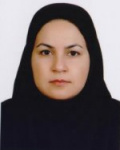| نویسندگان | لیلا مکوندی |
|---|
| همایش | Susa and Elam: History, Language, Religion and Culture |
|---|
| تاریخ برگزاری همایش | 2015-7-6 |
|---|
| محل برگزاری همایش | Louvain |
|---|
| نوع ارائه | سخنرانی |
|---|
| سطح همایش | بین المللی |
|---|
چکیده مقاله
The core of Achaemenid Empire has been main part of the Elamite realm. When Persians got the power, the Elamite were still around as we can see the role of Elamite culture and language in Persepolis administrative texts specifically in Fortification archive, which dates to the reign of Darius I (509-493 B.C). As a new corpus of primary evidence, it has the potential to shed new light on manifold aspects of daily life, economic activities and administrative structures in the heartland of the Achaemenid Empire, i.e. in an area roughly defined by central and western Fars and eastern Khuzestan. One of the most important aspects of the archive is hundreds of toponyms mentioned in texts, which some of them known from earlier Elamite sources, As well as their interrelations, have excited scholars with their promise of vast new insights in the historical geography of the Empire’s core and maybe some light on older Elamite cities, but when it comes to place the toponyms on the map, uncertainty still abounds. There are four main presented maps: 1.Hallock divided the region under purview of the Persepolis administration in three parts, 2.Koch subdivided the administrative territory in six areas and placed the toponyms within these areas, 3. Arfaee adopted Hallock’s approach, but in turn attempts to connect some of the ancient toponyms to known sites and (early) modern toponyms. Finally, Aperghis exclusively focused on the Royal Road and the stations alongside it. Taken together, the proposed maps are often contradictory; there is hardly any unanimity about the location of the toponyms and sometimes clash of their opinions got you confused. Also, all those maps suffer from a nearly-complete ignorance of archaeological data. This paper is not much concerned to re- drawing the new map of toponyms in the Persepolis Elamite Texts, instead aims to re- assess previous research and offer new viewpoint about locating the toponyms.

